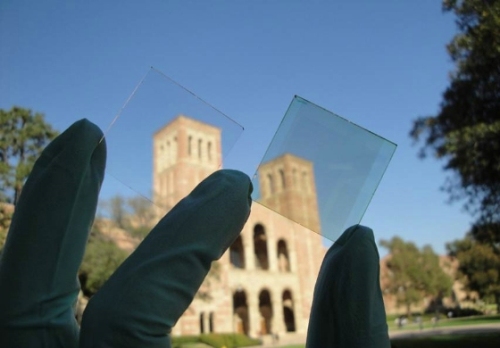Researchers at the University of California, Los Angeles (UCLA) have created a new type of transparent polymer solar cells (PSC) that are capable of generating electricity. These cells can be fixed onto windows. The novel technology allows people within the buildings to see outside as they are visibly transparent.
 Visibly transparent polymer solar cells produced by solution processing
Visibly transparent polymer solar cells produced by solution processing
The researchers produced the PSCs from a photoactive plastic material that has the ability to convert infrared light into electricity. These materials are flexible, light in weight and can be manufactured at low cost and in large quantities. These cells are around 70% transparent to the human eye and do not absorb visible light. They mainly absorb infrared light.
Researchers belonging to UCLA's Department of Chemistry and Biochemistry, the UCLA Henry Samueli School of Engineering and Applied Science, and the California NanoSystems Institute (CNSI), developed the PSCs by incorporating near-infrared light-sensitive polymer and silver nanowire composite films. These films were used as the top transparent electrode. The polymer is more sensitive to near-infrared light and absorbs more of it, while it is less sensitive to visible light.
In the past, opaque metal electrodes were employed as conductors. In the present study, the research team used a combination of silver nanowire and titanium dioxide nanoparticles to produce the electrode. They achieved a power-conversion efficiency of 4%. The team was able to fabricate the solar cells at reduced cost through solution processing.
UCLA professor of materials science and engineering and director of the Nano Renewable Energy Center at CNSI, Yang Yang stated that the results of the study demonstrate the potential of these PSCs to be used in smart windows, portable electronics, photovoltaics integrated in buildings, and in other applications.
The study has been published in the journal ACS Nano.
Source: http://www.ucla.edu/